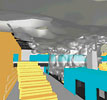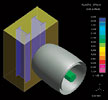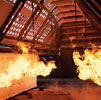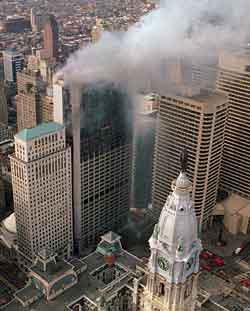A New Era for Fire Protection and Life Safety
Prescriptive- vs. performance-based
The life-safety features at 7WTC are, to a certain extent, an acknowledgement of the shift away from existing prescriptive-based codes to performance-based ones. ArupFire has done considerable work in this area and is an advocate for performance-based design. Performance-based codes are already in use in a number of countries around the world, and in the U.S., the International Code Council has developed a performance-based building code along with NFPA, which has performance options in its building code, NFPA 5000. Various performance-based design guides are also in use or under development: The Society of Fire Protection Engineers, for example, has developed a performance-based fire-engineering guide, and the Applied Technology Council is developing performance-based seismic-design guidance.
Brian Meacham, who leads the risk consulting business for Arup in North America, understands the primary difference between prescriptive-based and performance-based approaches: "Prescription focuses on what you need to do, and performance focuses on what outcomes you want to achieve. Prescriptive-based codes prescribe what must be designed, and in many cases how to design it, without providing any indication of the objective of the provision. For example, prescriptive egress provisions include maximum travel distances, separation distances between exits, and width of exit stairs. The design aspect is, therefore, fairly straightforward and often limited in options," he explains. Meacham believes that after 9/11, it makes more sense to incorporate performance-based approaches in both building codes and building design. A performance-based approach helps answer questions about how much fire resistance is needed, what fire-protection systems are appropriate, and what features an egress system should have. "Performance-based codes regarding egress, for example, would require the egress system to be designed with adequate capacity and protection to provide occupants with sufficient time to reach a place of safety without being exposed to untenable conditions," he says. "By stating the desired outcome, a performance-based code requires the fire-protection engineer to assess the fire hazard, as well as the time required for egress, and to design an integrated egress solution that achieves the stated performance."
|
ArupFire strategist Chris Marrion, whose special interest involves extreme events, advocates performance-based codes and adds, "Codes typically do not address extreme events such as blast, impact, and chemical/biological hazards. A threat and risk assessment for an individual building can help identify what blast, impact, and chemical or biological hazards it may be susceptible to." These arguments for performance-based codes are applicable to all risks, but they will be useful beyond life safety in areas such as energy efficiency and conservation, curtain-wall design, and material selection. In the near future, unfortunately, the focus will remain fixed on avoiding and confronting danger.












